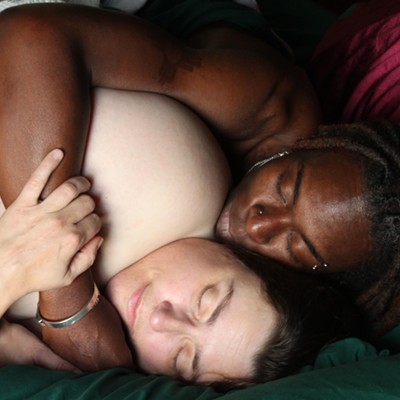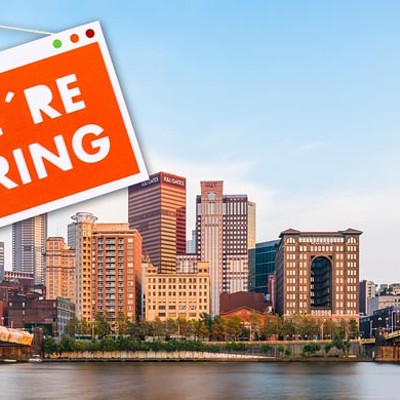Sacrifices. Human sacrifices.
Ha, ha! If only it were so interesting. The truth is that to look at them, some of those "well-dressed people" could have died years ago.
The Duquesne Club was founded in 1873, in an attempt to provide the city's newly affluent industrialists with a place to unwind after a hard day of exploiting the workers. The club contained facilities like a billiards room, card rooms, a library and numerous private dining rooms.
According to the officially sanctioned The History of the Duquesne Club, by Mark Brown, Lu Donnelly and David Watkins, from the outset the club's membership read like a Who's Who of the industrial elite. Yet members were prohibited from "open briefcases and signing papers in the Club's public areas ..., a remnant of English 'gentleman's clubs' where it was considered unseemly to be seen actually working." This may be the only thing the Duquesne Club has in common with your average row office.
The Duquesne Club may have ceased to be hip as long ago as 1879, when it relocated to its present site from the 800 block of Penn Avenue. A group of 20 younger members formed a club of their own, at least in part because they wanted to drink more liquor. By 1889, newspaper accounts were already referring to the remaining Duquesne Club members as "older, staider ... business men."
For most of its history, the club did not allow women members, and female guests were forced to come and go by a side entrance. This may have been a blessing, however: The official history shows 1930s-era photos of members sunbathing, with only tiny little towels to cover their ... ummm ... assets. (Fortunately for the reading public, the male members -- the male club members, I mean -- were considerably younger and more fit than many of those you see walking into the club today.)
In the postwar era, the Duquesne Club became the poker-faced façade behind which met the architects of the city's first Renaissance. One study asserts that 24 out of 25 members of the Allegheny Conference on Community Development -- the muscle behind David Lawrence's efforts to redevelop the city -- were Duquesne Club members.
Naturally, such gatherings made the club a target for malcontents. On a couple of occasions in 1969, protesters from the University of Pittsburgh held a sit-in to decry the social injustices of the day. But even these demonstrations reinforced the club's prestige, as a member of the rival Pittsburgh Press Club impishly pointed out in a letter to the editor: "Why is it the demonstrators always go to the Duquesne Club ... ignoring us? Don't those Pitt professors and flower children know how humiliating it is to be told ... you are not part of the country's power elite?"
Throughout these decades, the Duquesne Club presented a somewhat hooded, impassive face to the city, few of whose residents ever got inside. Even Stefan Lorant, whose book Pittsburgh: The story of an American city sits on many a Pittsburgh coffee table, had to sneak a photographer in with a "candid camera" to photograph the club's dining rooms, "where photography is strictly forbidden," as a caption in his book maintains.
Nowadays, though, they let just about anybody in. The first Jewish member was admitted in 1968, the first woman in 1980, and the first African American in 1983. As a doorman once told Newsweek magazine, the Duquesne Club became a model of egalitarianism: "Before you're a man or a woman you have to be rich." What could be more in the spirit of American democracy than that?
Even I've gotten into the Duquesne Club once or twice. All I had to do was finagle an invitation, put on a coat and tie and assume the pallid facial expression of the undead, and no one looked twice!
Other than pocketing some silverware, however, I have little to show for my visits. The pool tables are nice, and the place is decked with genre paintings by David Blythe, Pittsburgh's pre-eminent 19th-century artist. I didn't see any sacrificial altars, but maybe you have to be a member before they show you those.
The elite still use the club, of course. Political fund-raisers and business luncheons are still regularly held within its thick walls, so no one outside can hear the screams. But while power hasn't changed much since the old days, our attitude toward it has. In 1999, for example, the Duquesne Club became an issue in the county executive race between Jim Roddey and Cyril Wecht. Wecht's camp routinely referred to Roddey as "Duquesne Club Jim"; Roddey accused Wecht of holding a fund-raiser of his own there. Today's ambiguous anti-elitism -- we don't begrudge other people's wealth and power as long as they don't show off -- makes a Duquesne Club membership something you don't always want to call attention to.
Or maybe club members today just don't want us to imagine them sunbathing.










